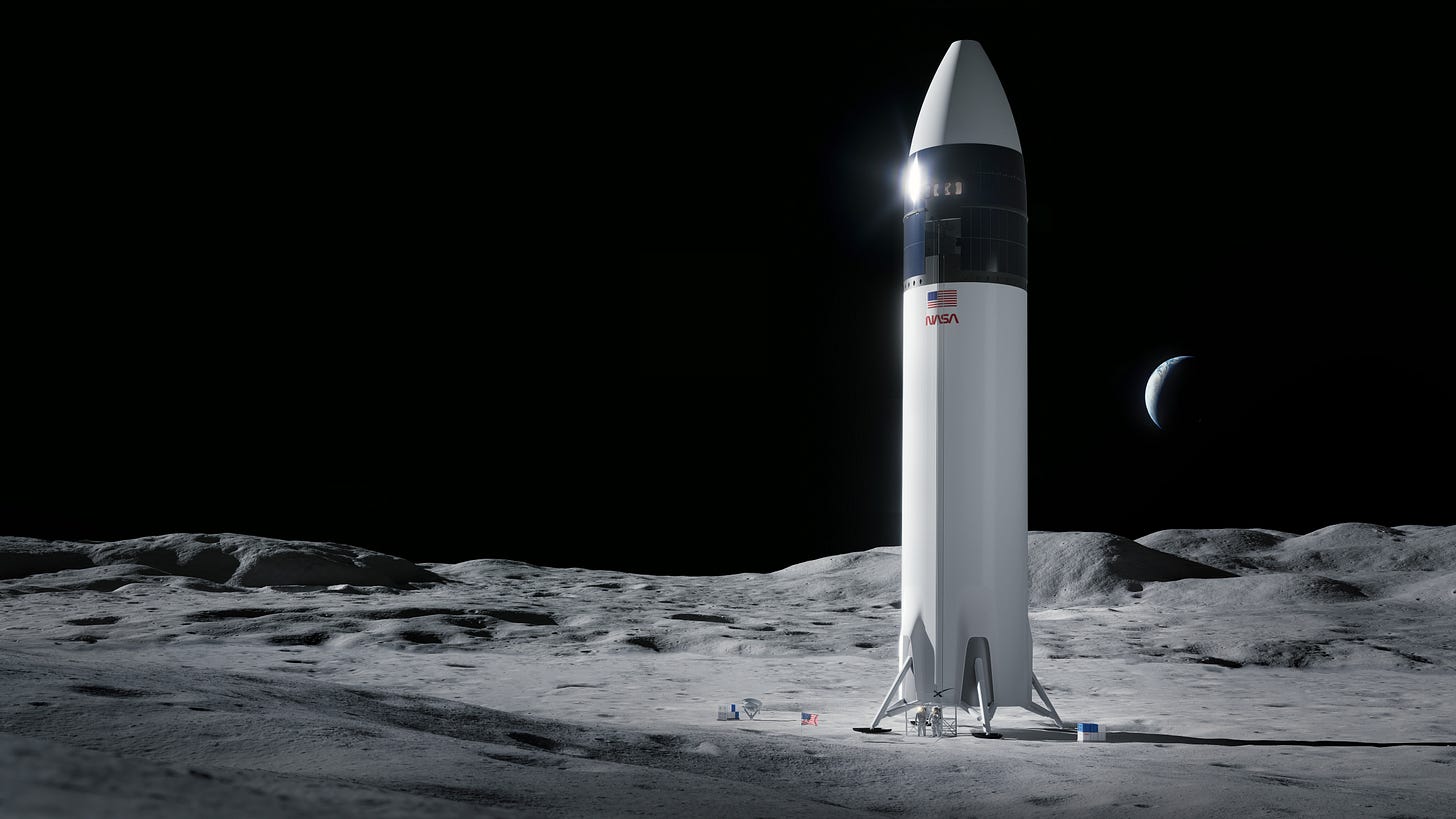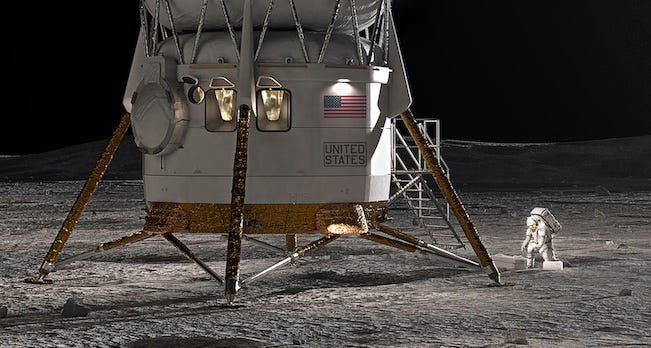This is a story about the rough-and-tumble world of government contracts and how unhappy participants can kiss and makeup in an attempt to further their goals. The lawsuits, threats, and any hard feelings have apparently been swept away now that NASA has a second contract for a vehicle to land US astronauts on the Moon.
Less than a month ago, NASA announced that Jeff Bezos’ company, Blue Origin, had won a contract for $3.4 billion to build a lunar lander that the company calls Blue Moon. The company says it will spend more than that amount of its own money to get its lander on the lunar surface. Blue Origin is celebrating the deal that it wanted a couple years ago.
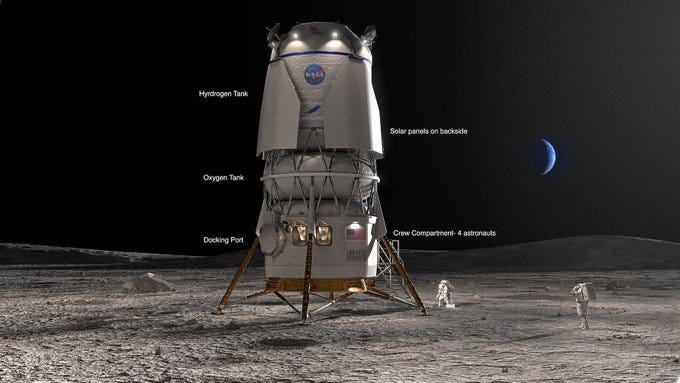
BEZOS LOSES TO MUSK
It was in 2021 that NASA angered Bezos by selecting Elon Musk’s SpaceX to build its Starship to carry US astronauts back to the Moon. NASA usually picks two contractors to compete. In 2021, NASA said it only had enough money to fund one effort. That was as much a message to Congress as it was to Blue Origin.
The Bezos company was having none of it. Blue Origin appealed the NASA decision, and lost. The Seattle-area company then went to court and sued NASA. That process put the entire lunar lander program on hold. The NASA Administrator complained in late 2021 that Blue Origin might delay America’s return to the Moon. Blue Origin lost the court case a couple months later.
By then, Congress was encouraging NASA to contract for a second landing system for the Moon. The space agency’s budget was increased too. Blue Origin was ready to try again and went about reworking its bid, a recognition that its original offer had shortcomings.
NEW DESIGN
At more than $7 billion, the new Blue Moon is dramatically different from the mockup that Bezos unveiled in 2019 before a live audience. Elements of that original design will be used for a cargo vehicle. The new crew vehicle is a very different architecture that will be fully reusable and carried to space by Blue Origin’s yet-to-fly New Glenn rocket.
The new lander stands nearly 50 feet tall. The crew compartment can carry four and is now the lower element of the lander. That means much easier access for the astronauts versus climbing tall ladders. The hydrogen and oxygen fuel tanks have been moved above the compartment. There is a docking port on the side of the crew compartment so the vehicle can dock with the orbiting Gateway that will serve as a small space station orbiting the moon.
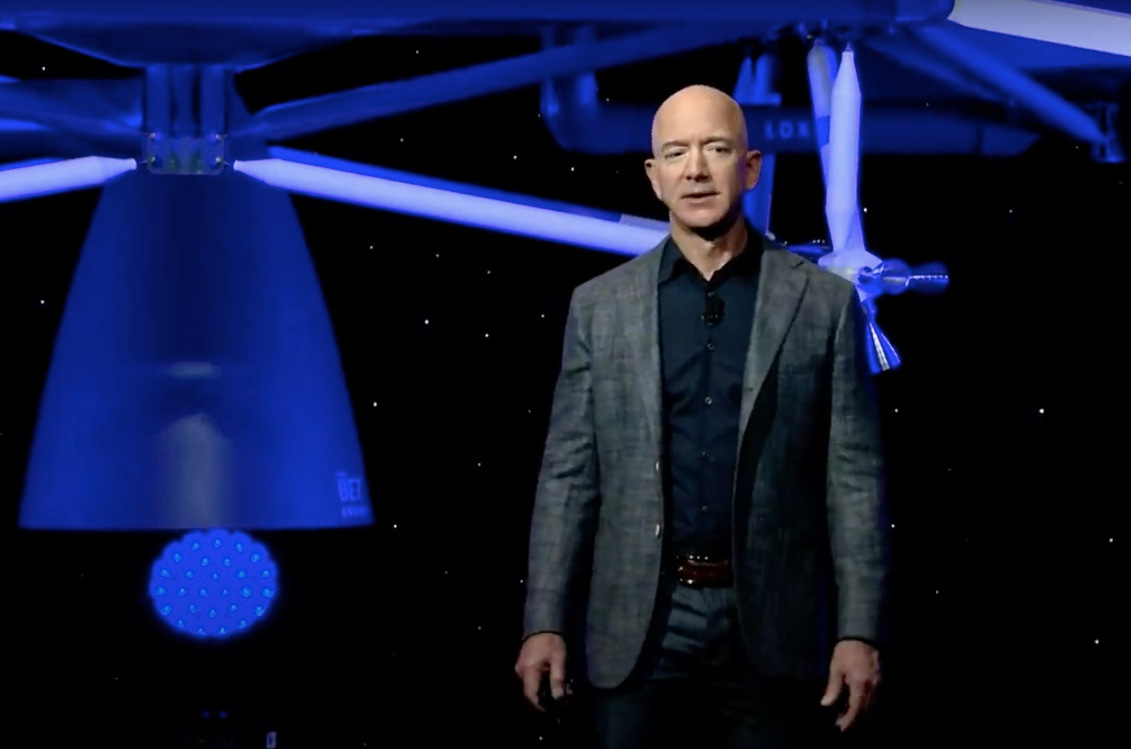
The lander will need refueling. The Blue Origin team will build a tug that will carry fuel into space. A key here is figuring out how to keep liquid hydrogen from boiling off. Liquid hydrogen has to be kept cold to keep from turning into a gas that must be vented to avoid over-pressurization. Blue Origin says it’s working on that technological challenge and is making progress.
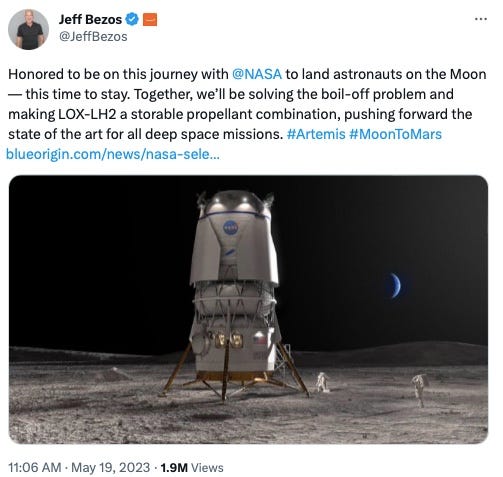
Blue Origin has five partners that will provide elements for this lander. Boeing will work on the docking port and Lockheed Martin will build the fuel tug. The team is promising test flights in 2024 and 2025 to prove its system. The lander is contracted to carry crew members for the mission known as Artemis V in 2029.
BILLIONAIRE RIVALRY
The bad blood is behind Bezos’ company and NASA. A Blue Origin executive called the new contract, “fantastic.” NASA Administrator Nelson said, “We are in a golden age of human spaceflight, which is made possible by NASA’s commercial and international partnerships.”
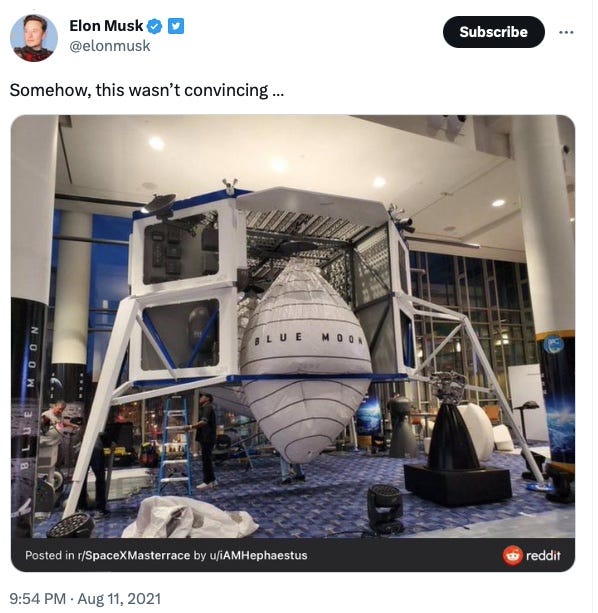
While Bezos has put his legal wrangling with NASA behind him, this contract only renews the rivalry with SpaceX and Elon Musk. Musk, who now owns Twitter, used the platform back in the summer of 2021 to needle Bezos for not getting part of the original contract. Using a photo of the mockup of Blue Moon with a deflated representation of the fuel tank, Musk said, “Somehow, this wasn’t convincing…”
That back and forth between the billionaires may not disappear. But, Bezos and NASA have buried the hatchet and want to go to the Moon together.




